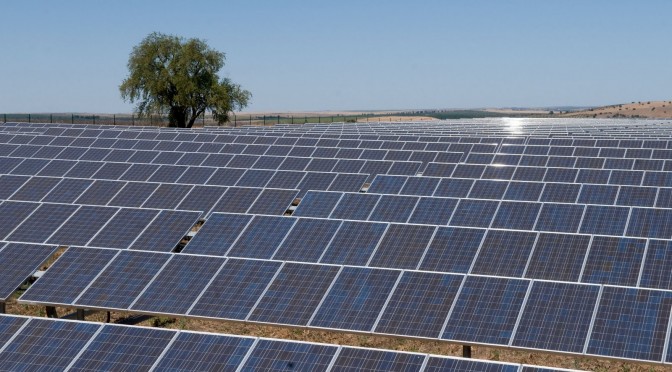PV relies entirely on China, unlike wind power and concentrated solar power, and there is a risk of substituting China-made PV for reliance on natural gas and oil from Russia.
The world scored a new record in 2021, producing 132.8 GW of solar PV capacity installations, up from 125.6 GW in 2020. China accounted for 53 GW (40%) of the 2021 additions. It was followed by the United States, India and Brazil, all of which set new annual records. Germany, Japan, the Republic of Korea, Spain and the Netherlands were the next largest sites of PV solar installations, but all of them failed to surpass their earlier peak volumes.
Solar PV manufacturing is highly concentrated, at both the corporate and country level.
Polysilicon is first processed into ingots and wafers, which are then manufactured into cells and assembled into odules. Among wafer producers, the market share of the top ten firms rose from 62% in 2016 to 95% in 2019. The top ten solar PV module manufacturers shipped more than 160 GW in 2021, giving them a 90% share of the global market. There is a significant degree of vertical integration among wafer, cell and module manufacturing operations.
The vast majority of global solar PV manufacturing takes place in China, supported by substantial government ncentives and extensive research and development (R&D). For wafers, China has a near-complete monopoly, with 96% of global production in 2021.
For cells, it commanded an 84% share of global capacities and 79% of production. For modules, the shares were 81% and 78%, respectively. Malaysia, Thailand and Vietnam have become manufacturing and assembly hubs, principally for Chinese companies, together representing close to 9% of cell and module production. Elsewhere in Asia, India, Japan, the Republic of Korea, Singapore and Chinese Taipei account for another 10.5% of cell
output and 7.6% of modules, respectively.
Close to half of the world’s module production in 2021 was exported, following a steep increase in international solar trade over the past decade. Trade statistics echo the lopsided manufacturing landscape, with the bulk of the world’s PV manufacturing jobs found in China and Southeast Asia. In 2020, two-thirds of China’s total PV production of 124.6 GW was shipped abroad. By contrast, major solar installers such as Germany, Brazil, India and the United States are net importers. The European Union imported 84% of the modules it installed between 2017 and 2021, more than the United States (77%) or India.
Factors such as land, energy, capital and labour largely determine the location of segments of the solar PV manufacturing supply chain (and thus localisation possibilities and domestic job creation), but government industrial policies are a critical factor in shaping viable supply chains.
Polysilicon production relies on large-scale capital investments; low-cost electricity and heat (given the energy-intensive nature of production, a big factor also in ingot and wafer production); and skilled labour.
The growing automation of cell manufacturing requires access to state-of-the-art production equipment plus the engineers and skilled machine operators to run it. Tax
breaks and low-cost land and electricity play a significant role in an industry with tight margins.
The module production segment focuses on assembly and therefore does not require the same level of technical skill as cell fabrication.
According to the US Department of Energy, 1 GW of production capacity (for crystalline silicon [c-Si] modules, which account for about 90% of all modules made) could generate anywhere from 1,085 jobs to 2,020 direct jobs across the full value chain, with variations by country and diverging degrees of automation and economies of scale across manufacturing facilities. Thin-film cadmium telluride (CdTe), which accounts for most of the remaining 10% of the global module market, is far less labour intensive and requires an estimated 400-600 direct jobs per gigawatt.
The International Energy Agency (IEA) estimates a similar range of 1 280-2 050 jobs per gigawatt for c-Si,3
but a lower figure of just 200 jobs for CdTe modules.
IRENA estimates global solar PV employment at 4.3 million in 2021, up from about 4 million in 2020.
Of the ten leading countries, five are in Asia, two are in the
Americas and two are in Europe. Together, the top ten accounted for almost 3.7 million jobs, or 87% of the global total. Asian countries host 79% of the world’s PV jobs, reflecting the region’s continued dominance of manufacturing and strong presence in installations.
The remaining jobs were in the Americas (7.7% of all jobs), Europe (6.8%) (with members of the European Union accounting for 5.5%) and the rest of the world (4.9%).
China, the leading producer of PV equipment and the world’s largest installation market, accounted for about 63% of PV employment worldwide, or some 2.7 million jobs.
Employment in PV and other solar technologies in the United States recovered from a dip in 2020, rising to 255 000 workers. PV employment in Europe is estimated at 268 000 in 2020, of which 235 000 are in EU Members States. India’s on-grid solar employment is estimated at 137 000 jobs, with another 80 600 in off-grid settings, for a total of 217 000 jobs. Japan added less capacity in 2021 than the previous year; IRENA estimates its workforce at 151 000.
In terms of gender balance, solar PV fares better than the renewable energy sector as a whole and far better than the global oil and gas industry.


